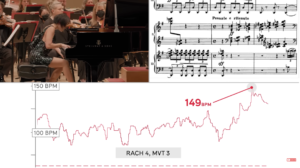Piano Forum
 |
Does Rachmaninoff Touch Your Heart? Today, with smartwatches and everyday electronics, it is increasingly common to measure training results, heart rate, calorie consumption, and overall health. But monitoring heart rate of pianists and audience can reveal interesting insights on several other aspects within the musical field. Read more >> |
Pages: [1] Go Down
Pages: [1] Go Up
For more information about this topic, click search below!
 Topic: Moonlight Sonata Music needed!
Topic: Moonlight Sonata Music needed!